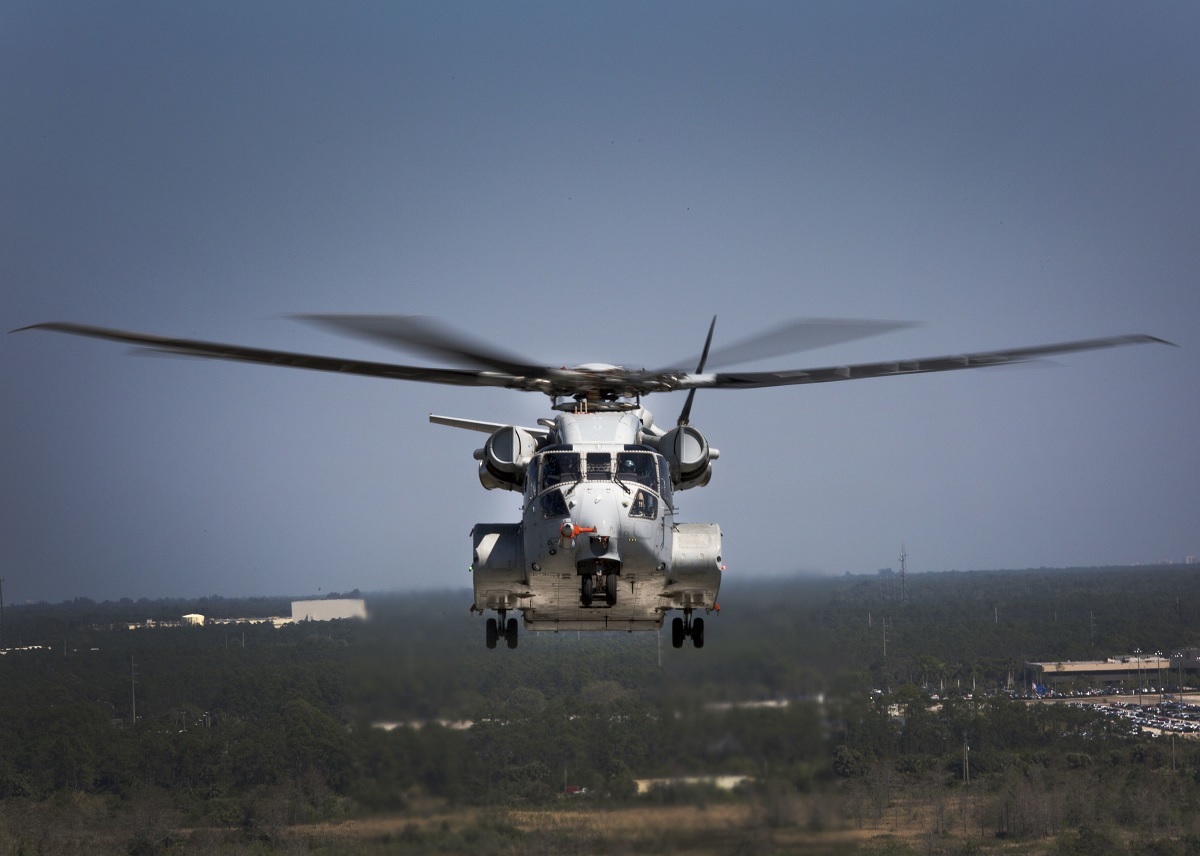CH-53K testers have discovered “airspeed indication anomalies, low reliability of the main rotor gearbox, hot gas impingement on aircraft structures, tail boom and tail rotor structural problems, overheating of main rotor dampers.”
The initial operational capability (IOC) date of the CH-53K won’t occur this December, a report from the office of the Director, Operational Test, and Evaluation (DOT&E) suggests.
Early testing has uncovered multiple design deficiencies that need to be corrected. Testers have discovered “airspeed indication anomalies, low reliability of the main rotor gearbox, hot gas impingement on aircraft structures, tail boom and tail rotor structural problems, overheating of main rotor dampers.”
As a result, IOT&E has been pushed back to early 2021.
As reported by Rotor & Wing International, the first of about 200 CH-53Ks the Marine Corps is buying from Sikorsky under a $25 billion contract was delivered in May to Air Station New River in North Carolina, where it will undergo further testing in preparation for IOC in 2019. According to Sikorsky, a second aircraft is scheduled for delivery in early 2019, and at least 22 others are in some stage of production.
Because there is a lag between program evaluations and the publication of the DOT&E report, Sikorsky CH-53K Program Director Bill Falk said many items the company anticipated in the report are already resolved.
“We remain aligned on a program plan with [Naval Air Systems Command] and the USMC to support the first CH-53K deployment in 2023-2024,” Falk, said on Jan. 31 in an emailed statement. “Resolution of technical issues is in process, with the majority already resolved.”

“Of those design items not yet closed, we have an agreed joint integrated path forward to have solutions in place to support IOT&E and the first CH-53K deployment in 2023-2024,” he added.
Flight testing is ongoing with four engineering and manufacturing development (EMD) aircraft, three system development test articles, and a ground test vehicle. Those seven flyable aircraft have flown a total of 1,212 hours as of September, according to the report.
Live fire testing has shown the King Stallion is more resistant to small arms, automatic weapons, and man-portable air-defense systems than the CH-53E it will replace.
“The CH-53K is currently on track to meet the survivability KPP but not without mitigations to address deficiencies uncovered in testing,” the report says. “This includes a self-sealing coating for the main gearbox lubrication sump, which the Navy is currently investigating. Any design changes to the aircraft design to address technical deficiencies may require additional live-fire testing to fully assess their effects on aircraft survivability. The planned Phase II live-fire testing against objective threats … has not been funded. This phase is essential for an adequate survivability assessment against operationally relevant threats.”
The CH-53K King Stallion provides three times the heavy-lift capability of its predecessor, the CH-53E. This increased payload capability can take the form of a variety of relevant payloads ranging from an internally loaded High Mobility Multipurpose Wheeled Vehicle (HMMWV) or the European Fennek armored personnel carrier and up to three independent external loads at once, which gives incredible mission flexibility and system efficiency.

Photo by Lance Cpl. Molly Hampton / U.S. Marine Corps

